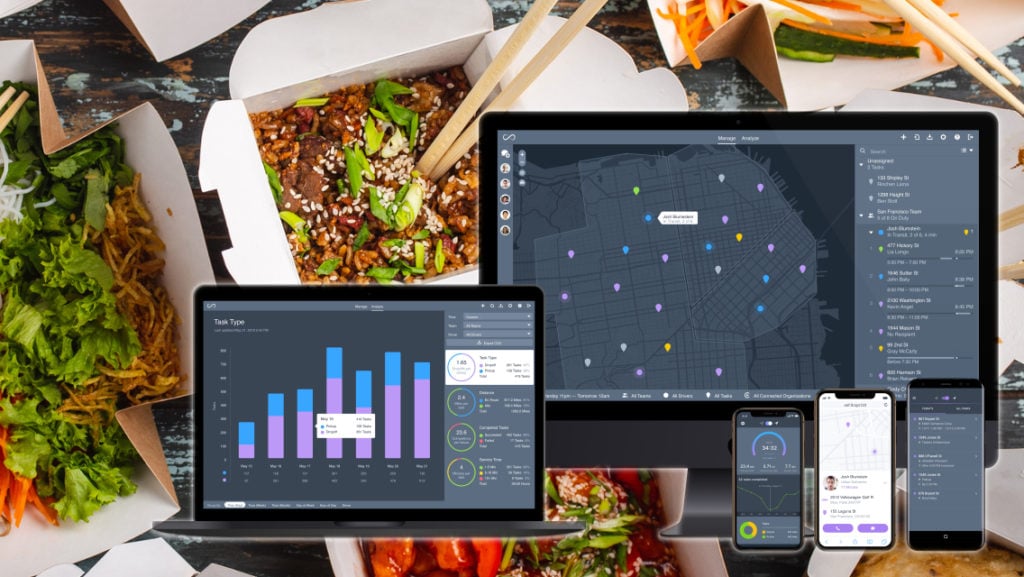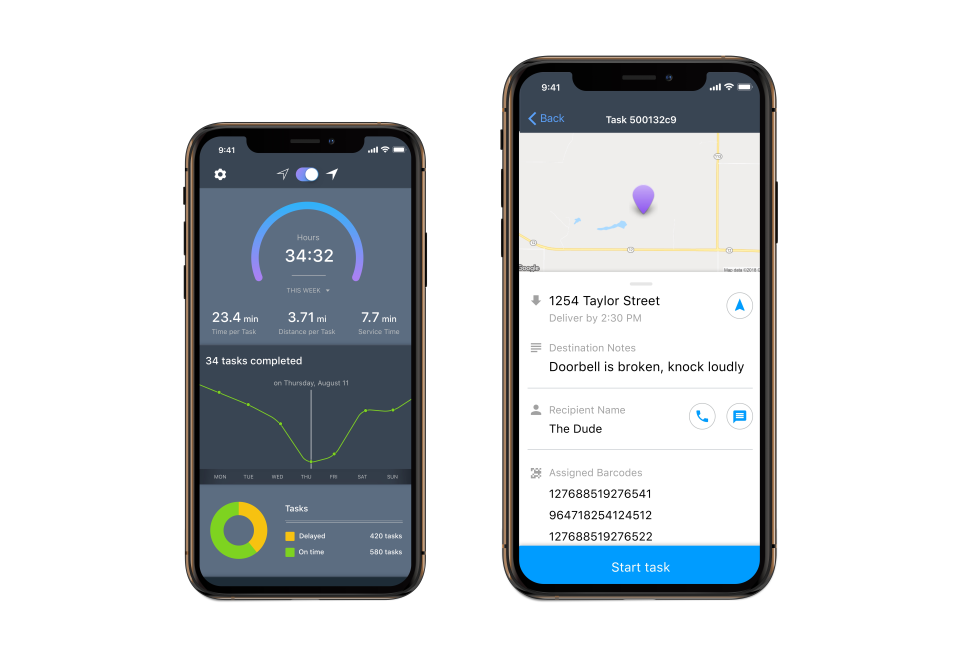
Launch a local delivery marketplace MVP within weeks
Now it’s easier than ever to quickly build an MVP for a local delivery marketplace, such as Uber Eats, Doordash, or Deliveroo, by combining the Spree Commerce marketplace platform with one of the Last Mile Delivery Software cloud providers.
What you get is a mobile-first web storefront for Buyers browsing and purchasing products, a web dashboard for Vendors (ie. restaurants, convenience stores, pet supply stores, pharmacies) as well as iPhone and Android mobile apps for Riders for automated delivery task dispatch, route optimization, and real-time delivery tracking.
It’s a game-changer enabling you to bootstrap your own local delivery marketplace startup MVP.
Feel free to contact us and discuss any specific requirements for your local delivery marketplace MVP built using Spree Commerce.
Lowering the entry barrier with 3rd party routing optimization and fleet management
Businesses such as Uber Eats, Doordash, or Deliveroo need to interface with several groups of stakeholders (end-customers, fleet of riders or drivers, vendors, operations, customer care, and accounting staff) using various channels (mobile-first websites, native iPhone and Android mobile apps) and integrate with 3rd party payments, taxation, accounting, analytics software.
Developing and maintaining such an IT ecosystem requires years of effort and millions of dollars of upfront investment. Not to mention tens of skilled IT professionals doing all this work, documenting their progress and project know-how, onboarding and training various user groups.
One of the most complex and costly areas to automate and optimize is fleet or routing management and delivery tracking using a combination of web app and native mobile apps. Fortunately, in recent years, several 3rd party providers emerged in the “Last Mile Delivery Software” category enabling even smaller businesses to launch their own local delivery platforms relatively quickly.
Last-mile delivery solution providers, such as Onfleet, Routific, OptimoRoute, Tookan, invest millions of dollars into their online and mobile apps development and maintenance so that you don’t have to. A monthly subscription to such services may cost hundreds of dollars but allows for a significant time-to-market reduction for your business.
All you have to do is combine such a service with a Spree Commerce marketplace platform to be able to get your MVP up and running within weeks.
It won’t be as custom or feature-rich as Uber Eats, Doordash, or Deliveroo but it will save you months, if not years, of development and hundreds of thousands in various costs annually.
Take a look how much it would cost you to build an MVP for such websites yourself.
Vendors
Onboard vendors, such as restaurant or grocery stores, and their product catalogs using the Spree vendor dashboard. They will be able to register, enter their products, configure prices, upload product photos. With some customization, besides enabling customer reviews, you might go for media-rich and social media integrated vendor profiles to build end-customer trust and nurture loyalty.
Vendors may accept or reject orders in the Spree vendor dashboard which also may be used to change the order status to indicate if the order is being prepared, it’s ready for delivery, has been picked up by a rider.
Depending on your marketplace target market(s) and payment methods of choice, you might arrange for vendor payouts manually or automate the whole payout process.
Riders
Self-service is king so why not allow for rider self-registration and get them earning money within minutes? With a combination of Spree registration and 3rd party mobile apps for task-sharing, they could start delivering immediately.
Auto dispatch feature hands out delivery tasks to riders and optimizes routes, minimizes delivery times and fuel consumption, maximizes deliveries and revenue for both Riders and the platform.
Similarly to Vendor payouts, depending on your payment processor of choice, Riders may get paid manually or the payout process may be fully automated.
Example questions for project scoping
General project questions
- what would be your target market(s) in terms of delivery zones?
- what language(s) would you like to support?
- what currency(ies) would you like to support?
- what marketplace payment processors are available in your target markets?
- how would you like to handle taxation, accounting, reporting, analytics
- what is the business model – commission-based? how do commission rates vary?
- what is the delivery pricing? how does it vary depending on various factors?
Vendor UI and features
- As a Vendor, I can configure my vendor profile
- how should it look and work?
- what end-customer actions should be allowed on a Vendor profile?
- As a Vendor, I can configure my product catalog
- what is the product category tree?
- what are the product attributes in each category?
- how would product entry work?
- As a Vendor, I get notified about new orders – how should it look and work?
- As a Vendor, I can toggle between order states
- what states are allowed?
- what information should be provided when toggling between order states?
- how should orders be pushed into auto-dispatch?
- As a Vendor, I can get paid
- what marketplace payment methods are available in your target market(s)?
- how should it look and work?
Buyer UI and features
- As a Buyer, I can browse and search the product catalog – how should it look and work?
- As a Buyer, I can add to cart and place an order – how should it look and work?
- As a Buyer, I can make a payment for my order – what payment methods should be available to Buyers?
- As a Buyer, I can track my delivery – how should it look and work?
- As a Buyer, I can submit a review – how should it look and work?
Rider UI and features
- As a Rider, I can self-register and download a mobile app – how should it look and work?
- As a Rider, I can pick up deliveries and fulfill them – how should it look and work?
- As a Rider, I can get paid
- what marketplace payment methods are available in your target market(s)?
- how should it look and work?
Images of the dispatch dashboard and rider mobile apps used courtesy of Onfleet.com




